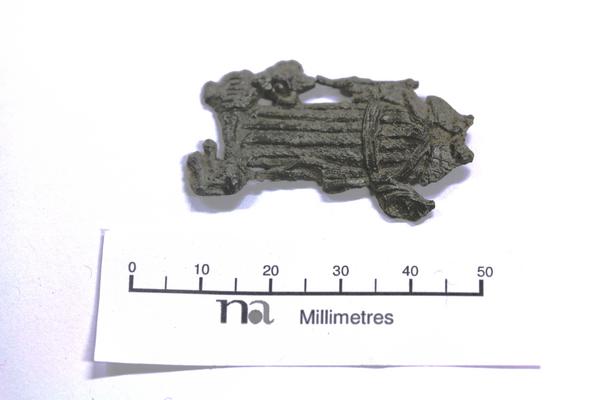pilgrim badge
Accession Number NWHCM : 1994.237
Description
Badge, Medieval lead pilgrim badge from a sacred shrine bearing the image of Richard Caister in the pulpit surrounded by an inscribed frame, above which is the head of God in the midst of sun's rays with the dove of the Holy Ghost to the left of Richard's head and a pin on the badge's reverse to attach it to a hat or cloak; found at the Globe Theatre, London
Read Morepilgrim badge
This pilgrim badge represents King Henry VI (1422 – 1461). He wears regal robes and is standing on the lion of England. In other instances, he is shown with a stag at his feet. He holds an orb and sceptre in his hands.
Though never canonised (made a saint), King Henry VI was widely venerated, especially in East Anglia. Henry VI became king at only eight months old. As a ruler, he was recorded as being shy, averse to warfare, and indecisive. This made Henry VI ill-suited for medieval kingship. His reign was plagued by a series of mental breakdowns and the outbreak of a civil war known later as the War of the Roses.
Following Henry VI’s death, he was informally regarded as a saint and a martyr. This was partly due to the king’s piety and visions of Christ and the Virgin. Henry VI’s cult was also encouraged by his nephew Henry VII for political gain. Miracles began to be attributed to ‘Holy Henry’ in the 15th century. These included raising a plague victim from the dead and saving the life of a man sentenced to hanging. He became particularly popular during times of adversity. Henry VI’s remains were reinterred at St George’s Chapel, Windsor in 1484. His shrine there became a popular site for pilgrims. As the need to legitimise Tudor rule grew less urgent, Henry VI’s cult faded. Dating from the late 15th century, this badge was probably bought as a souvenir of a pilgrim’s visit to the shrine of Henry VI at Windsor.


